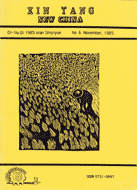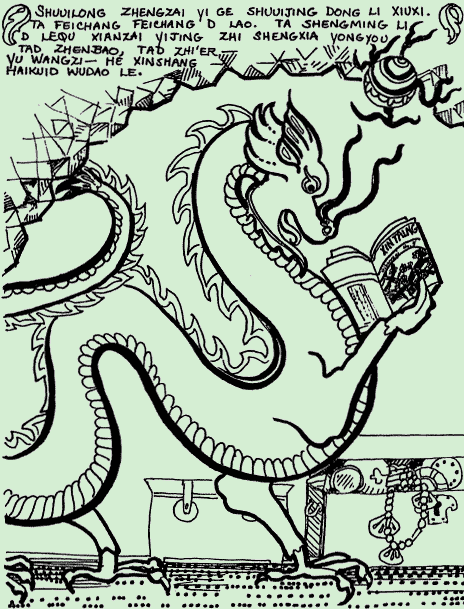 My previous post linked to a new HTML version of Homographobia, an essay by John DeFrancis. The work was first published in November 1985, in the sixth issue of Xin Tang (New China).
My previous post linked to a new HTML version of Homographobia, an essay by John DeFrancis. The work was first published in November 1985, in the sixth issue of Xin Tang (New China).
Xin Tang (Xīn Táng) is an especially interesting journal in that it is primarily in Mandarin written in romanization. A variety of romanization systems and methods are employed over the course of the journal. Indeed, over the course of its run one can see many questions of systems and orthographies being worked out.
I want to stress, though, that the journal does not restrict itself to material of interest only to romanization specialists. It also features poetry, illustrated stories, philosophy, letters to the editor, children’s material, and much more.
English and a few Chinese characters are also found; and there are even articles in languages such as Turkish (with Mandarin and English translations).
Most of what appears in English is also translated into Mandarin — romanized Mandarin, of course. So DeFrancis’s essay also appears, appropriately, in Pinyin:
Homographobia is a disorder characterized by an irrational fear of ambiguity when individual lexical items which are now distinguished graphically lose their distinctive features and become identical if written phonemically. The seriousness of the disorder appears to be in direct proportion to the increase in number of items with identical spelling that phonemic rendering might bring about….
Tongyinci-kongjuzheng shi yi zhong xinli shang d shichang, tezheng shi huluande haipa yong pinyin zhuanxie dangqing kao zixing fende hen qingchu d cir hui shiqu tamend bianbiexing. Kan qilai, zhei ge bing d yanzhongxing gen pinyin shuxie keneng zaocheng d tongxing pinshi shuliang d zengjia cheng zhengbi….
All of the issue with the DeFrancis essay is now online: Xin Tang no. 6.

Note the occasional employment of a tonal spelling (shuui).

I find it very tiresome to read, and it takes me a lot longer..I am too used to Chinese characters. This is as a non-native speaker who learnt Chinese from Hanyu pinyin.
Romanized Chinese has zero chance of gaining any acceptance outside teaching children and transliterating characters for the benefit of foreigners.
@ M, sorry but I think that is only your opinion. Personally I find them easier to read than characters